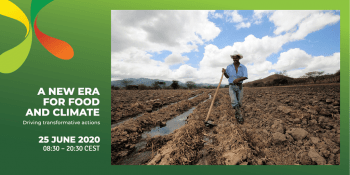What does ‘female empowerment’ mean to women in Kenya?
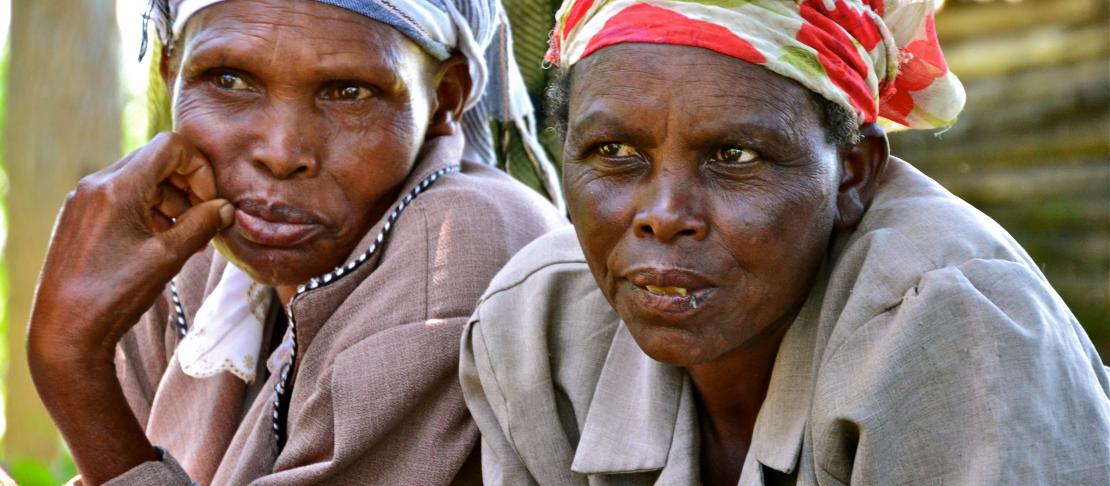
The term female empowerment can mean something completely different in different parts of the world. On a sunny May morning, a group of women from Lower Kamula village in Western Kenya kindly agreed to show us what the term means to them.
If you want to know more about research on closing the gender gap in farming under climate change:
- read our special blog series on Closing the gender gap
- watch the presentations and the panel discussion from the Closing the gender gap event
- follow the #AgGenderGap event hashtag on twitter
The term ‘empowered’ usually refers back to an inner feeling of increased confidence, self-worth or knowledge. But as elusive as these feelings are, elusive is how it is. The term has even been accused of being a buzz word, hollow of real meaning and content. Despite this, the term keeps growing world wide especially in the development sector, encouraging us to further explore its meaning and how to successfully support long-term empowerment of women.
The United Nations has put together an "empowerment booklet" where they define the term as the "process of enabling people to increase control over their lives, to gain control over the factors and decisions that shape their lives, to increase their resources and qualities and to build capacities to gain access, partners, networks, a voice, in order to gain control".
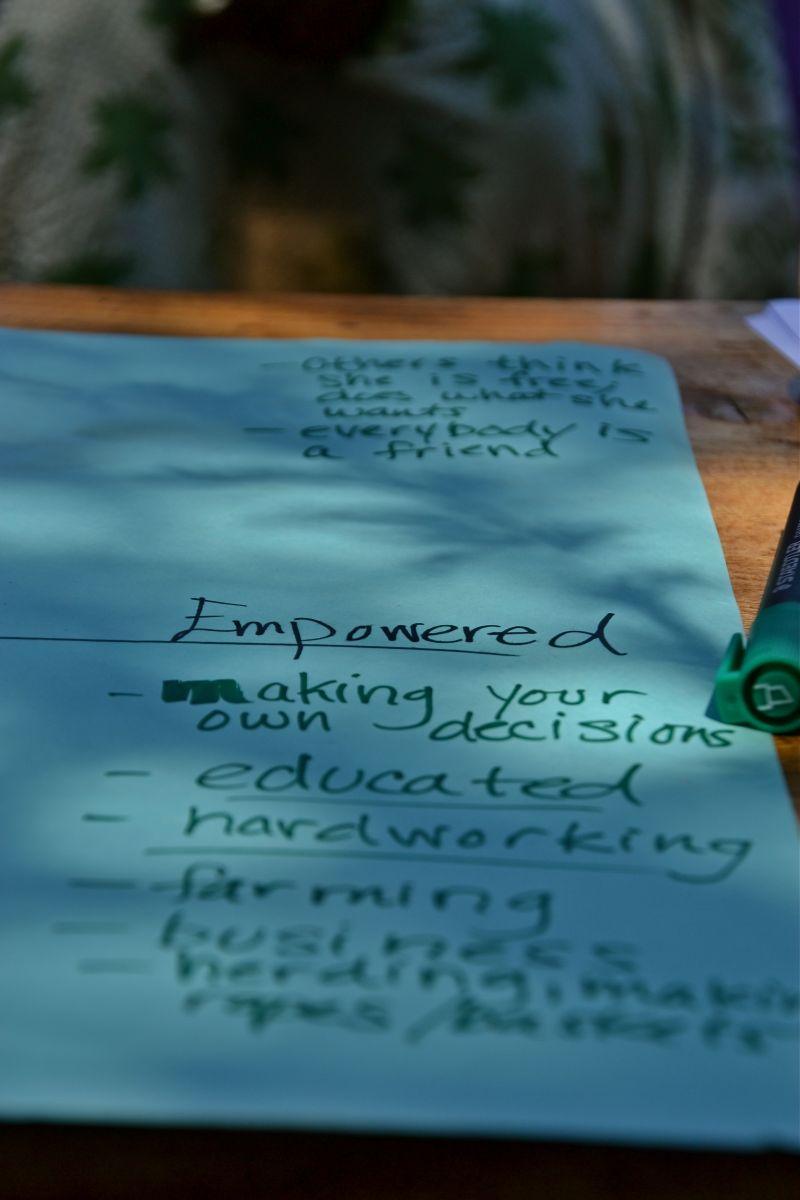 But putting that advanced definition aside, what does empowerment mean to rural women, in this case women living in Lower Kamula village? What does it mean to be an empowered woman in their community?
But putting that advanced definition aside, what does empowerment mean to rural women, in this case women living in Lower Kamula village? What does it mean to be an empowered woman in their community?
A better understanding of how women perceive empowerment will mean that we can construct projects that better support women becoming empowered according to their own definition (and not someone elses).
Getting the session started!
The women who had joined for the "Female Empowerment" session that day smiled as we approached them. It was time to begin.
We had come to test an upcoming Practitioner’s Guide on gender and climate change research, currently being developed by the CGIAR Research Program on Climate Change, Agriculture and Food Security (CCAFS).
The guide helps researchers and development practitioners pick up gender and social differences in rural communities. In addition, it assists both researchers and village members in sorting out the needs and strengths of a community, useful when planning climate adaptation and mitigation work. The guide is now being put through the test in Western Kenya and Ghana by CARE and CCAFS.
Learn more: Coming soon: a gender and climate change manual made by many
Talking and drawing empowerment
As part of the group discussion, we asked participant to think of a woman that is empowered. Did they know anyone, themselves or someone else, that they felt was 'empowered'? What are the characteristics and strengths of that woman?
The “Socially Inclusive Participatory Research and Development for Climate Change and Food Security Guide" will be released later this year.
Led by CCAFS, it is the product of multiple partners, including CARE and the Food and Agriculture Organization (FAO). Tested in both Kenya and Ghana, it builds on a previous gender, agriculture and climate research manual released in 2012 by FAO and CCAFS.
With one woman drawing the “empowered woman”, the others were encouraged to describe how this woman behaves:
“An empowered woman is free, and can do what she wants,” said Dorothy, a farmer and rope-maker.
Farmer Linet Ogada said: “an empowered woman sees opportunities, and doesn’t sit and around and wait for help. She makes her own decisions and encourages fellow women.”
"She has an education and knows how to farm well," said one woman.
What are disempowered women like? “A disempowered woman can’t decide on her own and has no education. She is trapped in the household without prospects,” said one participant.
For many of the women in the group, an empowered woman is educated, either having a University degree or College certificate, and has the respect of the community. Studying agriculture can help her become a good farmer the participants agreed, and it would be good if she spent time teaching her family, friends and other community members what she has learned.
Many mentioned that an empowered woman makes decision together with her husband, and the community respects the fact that she has power within the household.
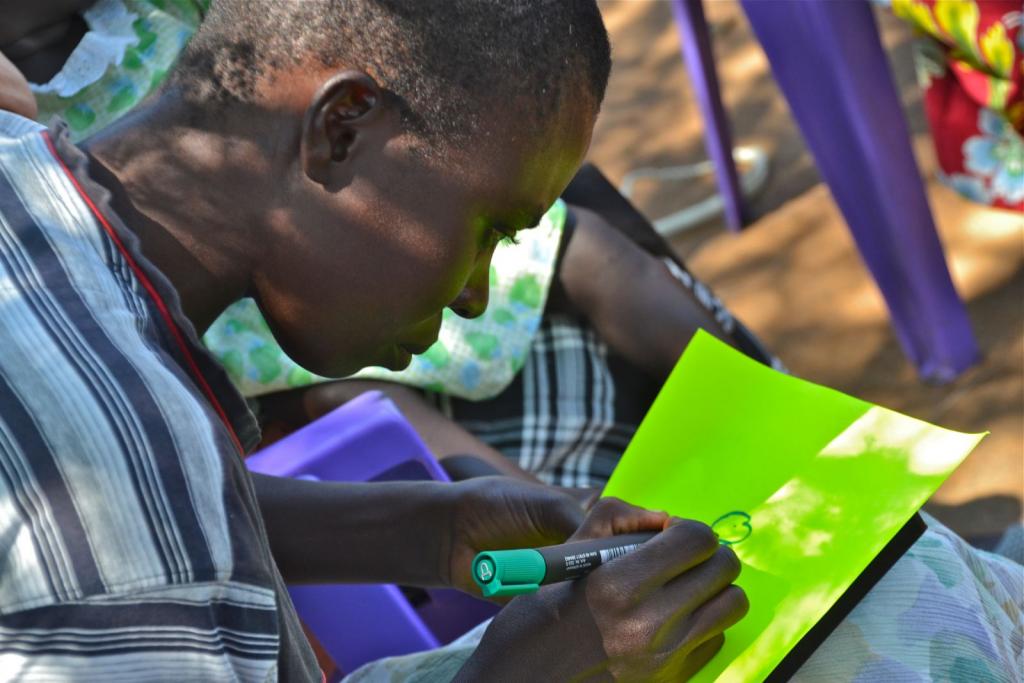
Drawing an empowered woman is not the easiest of tasks! Full concentration needed. Photo: C.Schubert (CCAFS)
How to become an empowered woman?
The women agreed that in order to move from disempowered to empowered, you have to finish your education, start a small business or get a job.
Farmer Dorothy also mentioned that if you don't have an education you can find people who are willing to train you to do something that will help you earn some money. She herself had taught her sister-in-law to make ropes and baskets, making her feel really good and confident as a teacher, and her friend is now capable of earning her own income.
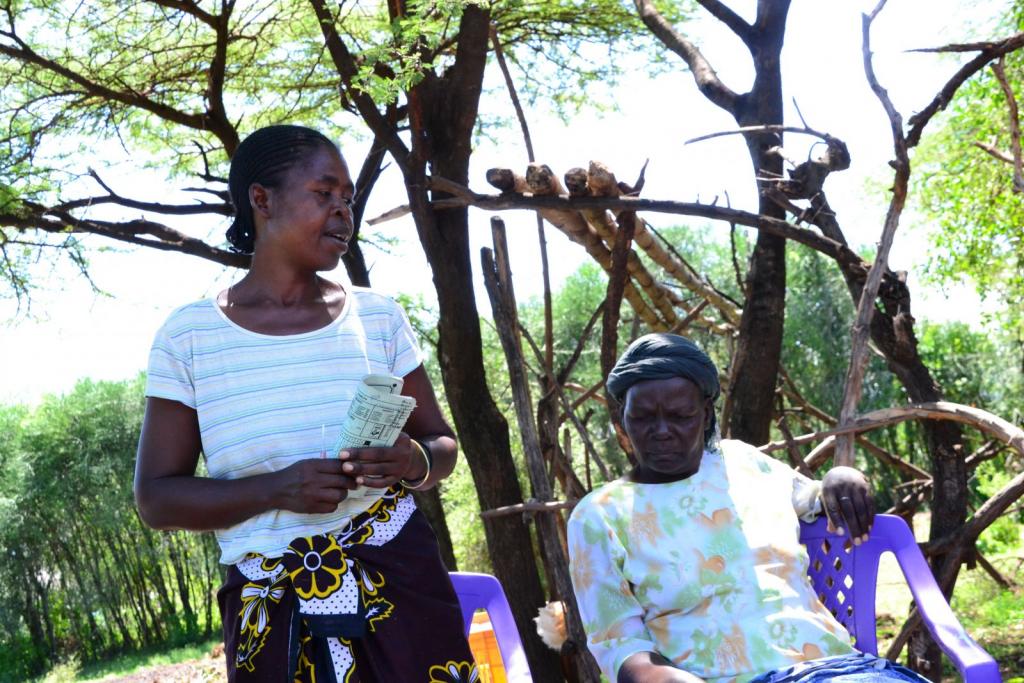
Dorothy talks about how she helped her sister-in-law become a rope-maker. That is one way to become empowered, either getting trained or training others. This will help you feel more confiden, she said.
Photo: C. Schubert
And this is what this particular session aims towards: sparking disussions among women regarding empowerment. Ideally we hope that the women who particpated will see that by discussing and thinking about the steps involved to become empowered, will lead to them taking a few initial steps themselves. Of course, in order to become empowered like the UN definition, additional resources and targeted efforts are needed.
The session is also targeted towards development practicioners wanting to construct better projects that aim to serve the interests and needs of women, and create stronger empowerment-focused projects.
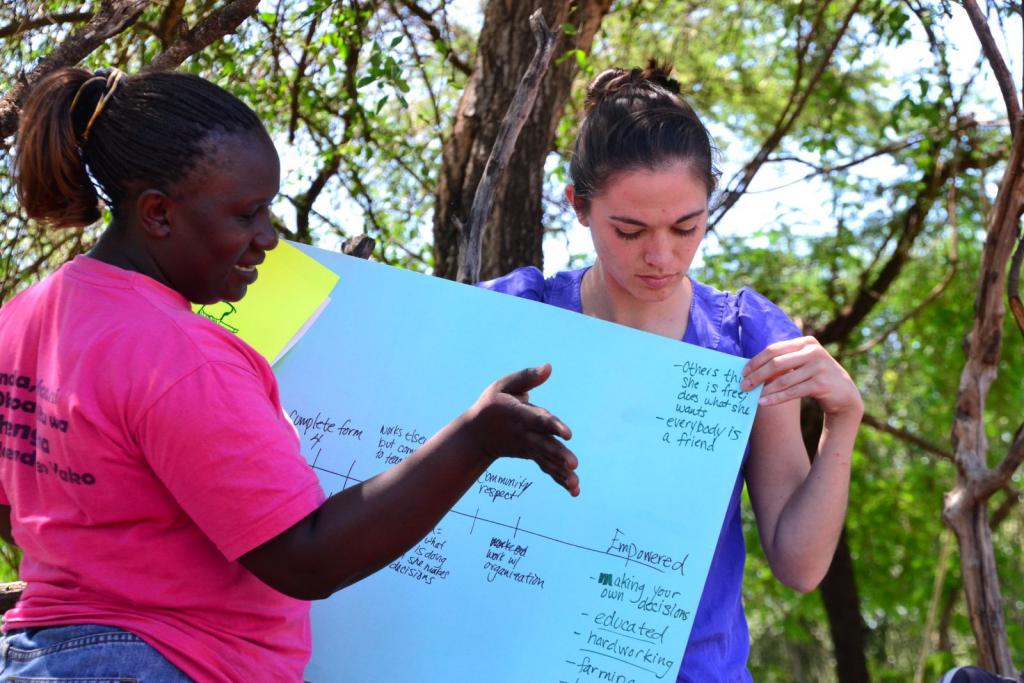
illustrating how to move from disempowered to empowered with the steps outlined by them women themselves.
Photo: C.schubert
This work forms a crucial linkage between more "traditional" scientific agricultural research, i.e. knowledge production and the work we do under Theme Linking Knowledge with Action, which is searching for ways to create change on the community level through communication, participation and partnerships.
The guide will asssit development practicioners and researchers find ways to engage with community members and gather information, while in a participatory way create more in-depth discussions about goals, gender-norms and values, climate adaptation and much more. As we are testing the manual we are also training partners CARE and WeEffect in how to use it, thus building capacity and momentum for Participatory Action Research.
View all photos from this Female Empowerment Session:
To help strengthen women in the Nyando area, CCAFS is working with World Neighbors. Listen to Caroline Odera talk about her work for CCAFS, which includes setting up projects such as table banking and micro-businesses and farm trainings based on the women's expressed needs. Since she started working she has seen a big difference among the women in the community, many now being able to support themselves.
We've shared lessons learned from previous gender participatory research in this Learning Brief: Participatory approaches for gender-sensitive research design (PDF)
Read additional story from testing the up-coming participatory guide:
- Uncovering gender perceptions and beliefs in the hunt for climate information
Cecilia Schubert works as a Communications officer for Theme Linking Knowledge with Action and Gender. She joined the testing of the guide in Western Kenya in May.
The Gender Empowerment session will be modified based on experiences testing the guide in Western Kenya and Ghana.


